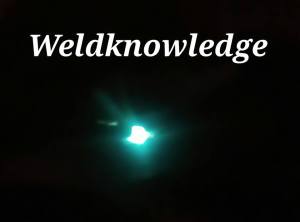In yesterday’s article we saw how metal carbides in the weld built up enhances the life of a component. Continuation to the same topic today discussion is on how these metal carbides are formed and their affinity towards carbon.
The greatest number of alloying elements in steel and cast iron chemically react with carbon forming interstitial phases or complex structures usually called carbides. Experiments have shown that the tendency towards carbide forming in steels is related to electron configuration of alloying elements. Those elements whose sub layer d is less occupied by electrons than in iron form special carbides. The smaller the electron number in the sub layer d, the higher is the tendency towards forming special carbides and, hence, the more stable carbide. Table (below) gives atomic numbers, energy state, atomic radii of important carbide forming elements, as well as ratios of carbon atomic radius and the atom radius of the corresponding element.
Table: Carbide forming elements, atomic numbers, energy state, atomic radius in nm and ratio of carbon atomic radius (0.077 nm) to those radii
In accordance with the given rule, carbide forming order goes in the direction from iron towards manganese, chromium, vanadium to titanium: Ti ←V ← Cr ← Mn ← Fe, from molybdenum, through niobium to zirconium: Zr ← Nb ← Mo, from wolfram through tantalum to hafnium: Hf ←Ta ←W. Alloying elements whose sub layer d is more occupied by electrons than iron do not form carbides in alloy steels, this is especially the case with elements with completely occupied sub layer d, like copper or zinc. In the case when there are several carbide forming elements in an alloy steel, carbon will always bind to an element of greater carbide forming tendency. This means that in steel alloyed with Cr and V, more V and less Cr-based carbides should be expected, while for higher contents of V and Cr there are no iron-based carbides. The carbon atomic radius is 0.077 nm, while atomic radii of all carbide forming elements are higher than 0.1 nm. When the ratio of the carbon atomic radius and the atomic radius of a carbide forming element is less than 0.59 (Zr, Hf, Ti etc.) intermetallic phases with the following characteristics are formed:
- they have (or have retained) stoichiometric ratio MC or M2C (where M- metal, and C- carbon),
- they have a simple crystal lattice formed by metal atoms as well as mixed lattice, usually face-centered cubic (carbides of MC type) or close-packed hexagonal crystal lattice (carbides of MC or M2C type),
- they can form a crystal lattice with no carbon atoms, i.e. they can crystallize with incomplete occupancy of sites,
- they are very stable compounds with extremely high melting temperatures (2000-3500ºC) and almost insoluble in austenite,
- they possess high hardness.
When the ratio of the carbon atomic radius and the atomic radius of carbide forming element is higher than 0.59 (e.g. Mn), carbides have a complex structure. Most of known carbides crystallize into three crystallographic systems: cubic, hexagonal and rhombic. Some elements can form two types of carbides, whereas manganese and chromium can form even three types of carbides with different crystal lattices. The simplest carbides crystallize in a cubic system of a primitive lattice of MC type. These carbides are formed by V, Ti, Nb, Ta and Hf. More complex carbides crystallize in a hexagonal system with lattices of MC and M2C type. Only molybdenum and wolfram have hexagonal lattices of MC type, while V, Nb and Ta have M2C type lattice. The ε carbide found in hardened and low tempered steels also has a hexagonal lattice of MC type. Rhombic lattices are formed by Cr, Mn, Fe, Co, Ni carbides. From the aspect of resistance to wear and high temperatures, it should be pointed out that chromium and manganese carbides crystallize in a regular , hexagonal (Cr7C3 and Mn7C3), as well as in rhombic (Cr3C2 and Mn3C) system. Except for chromium carbide Cr3C2, all others are found in iron alloys, where a certain number of iron atoms can be replaced with another metal (alloyed cementite).
When there several carbide forming elements are present in steel-filler material, carbides of elements with greatest affinity towards carbon will be first formed. For example, in steel with a certain content of carbon W and Mo carbides and Fe3(W,Mo)3C are formed first, then chromium carbide Cr23C6, and finally the second chromium carbide Cr7C3 is formed. If there is enough carbon left cementite can be formed too.
Therefore, if the chemical composition of the filler and the main material (steel) is known, it is possible to predict approximately what kind of carbide will be formed.
Reference: Carbide Type Influence on Tribological Properties of Hard Faced Steel Layer – Part I – Theoretical Considerations, V. LAZIĆ, D. MILOSAVLJEVIĆ.
Keep reading, Happy welding
Thank you,
KP Bhatt


One thought on “Carbides formation in Metal base”